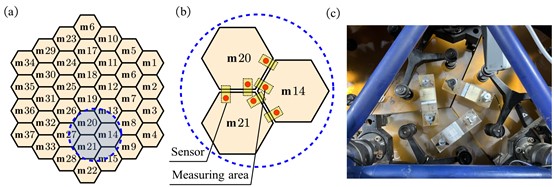
DOI: 10.1117/12.3022677
Abstract
The edge displacement sensor, serving as a core component in large-aperture astronomical telescopes, plays a crucial role in maintaining the co-focusing of mirrors by measuring tiny displacements between sub-mirrors. Therefore, the performance of the sensor is of paramount importance to ensure that the telescope can obtain clear and accurate images. The challenging on-site environmental conditions place high demands on the sensor's performance. The key characteristics of the edge displacement sensor include nanometer resolution, low nonlinearity, minimal temperature drift, and temporal stability. Simultaneously achieving all these performance criteria poses significant challenges. We have developed an ultra-stable eddy current edge displacement sensor with a resolution better than 1nm (RMS) within a range of 250μm. During on-site testing at the Guoshoujing Telescope (the Large Sky Area Multi-Object Fiber Spectroscopic Telescope LAMOST) telescope, the sensor exhibited a temperature drift within ±2nm/℃ after temperature compensation and achieved a drift of less than 25nm over 5 weeks. The environmental temperature varied within the range of -17~+14℃, and humidity fluctuated between 20% and 80%RH during the testing. Additionally, a co-focusing test was conducted on a small system composed of three selected sub-mirrors. Six sets of sensors were installed on this small system, enabling real-time measurement of sensor outputs for attitude correction. The test results indicate that, by relying on sensor feedback, the telescope has the potential to achieve high-quality co-focusing over extended periods and significant temperature ranges, thereby enhancing the operational efficiency and observation quality of the telescope.
文章摘要
边缘位移传感器作为大口径天文望远镜的核心器件,通过测量子镜之间的微小位移来协助保持镜组的共焦,因此传感器的性能对确保望远镜能够获得清晰、准确的图像非常重要。恶劣的现场环境对传感器的性能提出了很高的要求,边缘位移传感器的主要特性是纳米分辨率,低非线性,低温漂和低时漂,同时实现上述性能是非常困难的。
我们设计了一种超级稳定的电涡流边缘位移传感器,该传感器在250μm量程范围内的分辨率优于1nm(RMS)。在LAMOST望远镜现场的测试中,该传感器在温度补偿后温漂在±2nm/℃以内,并实现了5个星期内时漂小于25nm。测试期间环境温度变化范围为-17~+14℃,湿度变化范围为20%~80%。此外,在选取的三块子镜构成的小系统上进行了共焦测试,我们在小系统上安装了6套传感器,通过实时测量传感器的输出对小系统进行姿态校正,测试表明,依靠传感器反馈有望在长时间(10天以上)、大温度跨度(20℃以上)的情况下实现较高质量的共焦,有助于提高望远镜的工作效率和观测质量。
图片摘要

图一:传感器结构

图二:LAMOST上六个边缘位移传感器的配置,(a)最小子系统的位置,(b)传感器安装位置和方向,(c)传感器的现场安装图片

图三:八个夜间观测周期的波前传感测量值
我们用传感器进行了8天的长期共焦测试,期间温度变化超过5℃。测试结果如上图所示,EE80值在参考值0.343角秒tip/tilt附近略有波动。我们认为这是视宁度和其他误差导致的这些波动。
亮点
我们对设计的电涡流边缘位移传感器进行了全面的测试,结果表明其具有优异的温度稳定性和长期可靠性。在LAMOST球面主镜MB最小子系统上的测试表明,这些传感器有望成为实现望远镜长期高性能共焦对准的有力的候选者。在下一阶段,我们计划增加传感器的数量,并将共焦测试扩展到更广泛的范围。此外,我们将继续完善传感器设计以提高其性能,目标是将这些传感器应用于具有更大孔径的共焦或者共相望远镜。







